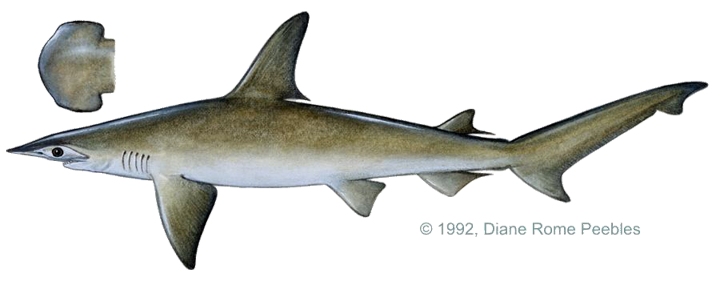Game Fish Identification Reference Guides
Shark, bonnethead
(Sphyrna tiburo)
(Sphyrna tiburo)

(Linnaeus, 1758); SPHYRNIDAE FAMILY; also called shovelhead, cação-chapéu, cação-martelo, cação-pata, cornudo de corona.
This abundant species occurs in the western Atlantic form North Carolina, USA (occasionally to Rhode Island) to southern Brazil, including Cuba and the Bahamas, the Caribbean and the Gulf of Mexico. In the Eastern Pacific, it is found from southern California to Ecuador. It occurs chiefly in shallow water, often in bays, estuaries and channels where it feeds largely on crabs, shrimps and small fish.
The bonnethead differs from all other hammerheads in having a shovel or bonnet (not hammer) shaped head. Maturity is reached at about 30 in (75 cm) and it can grow to about 5 feet (150 cm). Pups are born in late summer and early fall with eight to twelve pups in each litter.
Bonnetheads can be taken on flies and are hard to beat as light tackle sportfish
This abundant species occurs in the western Atlantic form North Carolina, USA (occasionally to Rhode Island) to southern Brazil, including Cuba and the Bahamas, the Caribbean and the Gulf of Mexico. In the Eastern Pacific, it is found from southern California to Ecuador. It occurs chiefly in shallow water, often in bays, estuaries and channels where it feeds largely on crabs, shrimps and small fish.
The bonnethead differs from all other hammerheads in having a shovel or bonnet (not hammer) shaped head. Maturity is reached at about 30 in (75 cm) and it can grow to about 5 feet (150 cm). Pups are born in late summer and early fall with eight to twelve pups in each litter.
Bonnetheads can be taken on flies and are hard to beat as light tackle sportfish













